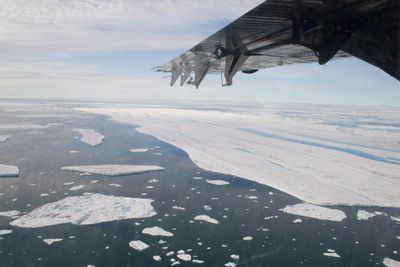Giant ice sheet loose in Canadian Arctic

TORONTO – A chunk of ice shelf nearly the size of Manhattan has broken away from Ellesmere Island in Canada’s northern Arctic, another dramatic indication of how warmer temperatures are changing the polar frontier, scientists said Wednesday.
Derek Mueller, an Arctic ice shelf specialist at Trent University in Ontario, told the Associated Press that the 4,500-year-old Markham Ice Shelf separated in early August and the 19-square-mile shelf is now adrift in the Arctic Ocean.
“The Markham Ice Shelf was a big surprise because it suddenly disappeared. We went under cloud for a bit during our research and when the weather cleared up, all of a sudden there was no more ice shelf. It was a shocking event that underscores the rapidity of changes taking place in the Arctic,” said Mueller.
Mueller also said that two large sections of ice detached from the Serson Ice Shelf, shrinking that ice feature by 47 square miles – or 60 percent – and that the Ward Hunt Ice Shelf has also continued to break up, losing an additional eight square miles.
Mueller reported last month that seven square miles of the 170-square-mile and 130-feet-thick Ward Hunt shelf had broken off.
This comes on the heels of unusual cracks in a northern Greenland glacier, rapid melting of a southern Greenland glacier, and a near record loss for Arctic sea ice this summer. And earlier this year a 160-square mile chunk of an Antarctic ice shelf disintegrated.
“Reduced sea ice conditions and unusually high air temperatures have facilitated the ice shelf losses this summer,” said Luke Copland, director of the Laboratory for Cryospheric Research at the University of Ottawa. “And extensive new cracks across remaining parts of the largest remaining ice shelf, the Ward Hunt, mean that it will continue to disintegrate in the coming years.”
Formed by accumulating snow and freezing meltwater, ice shelves are large platforms of thick, ancient sea ice that float on the ocean’s surface but are connected to land.
Ellesmere Island was once entirely ringed by a single enormous ice shelf that broke up in the early 1900s. All that is left today are the four much smaller shelves that together cover little more than 299 square miles.